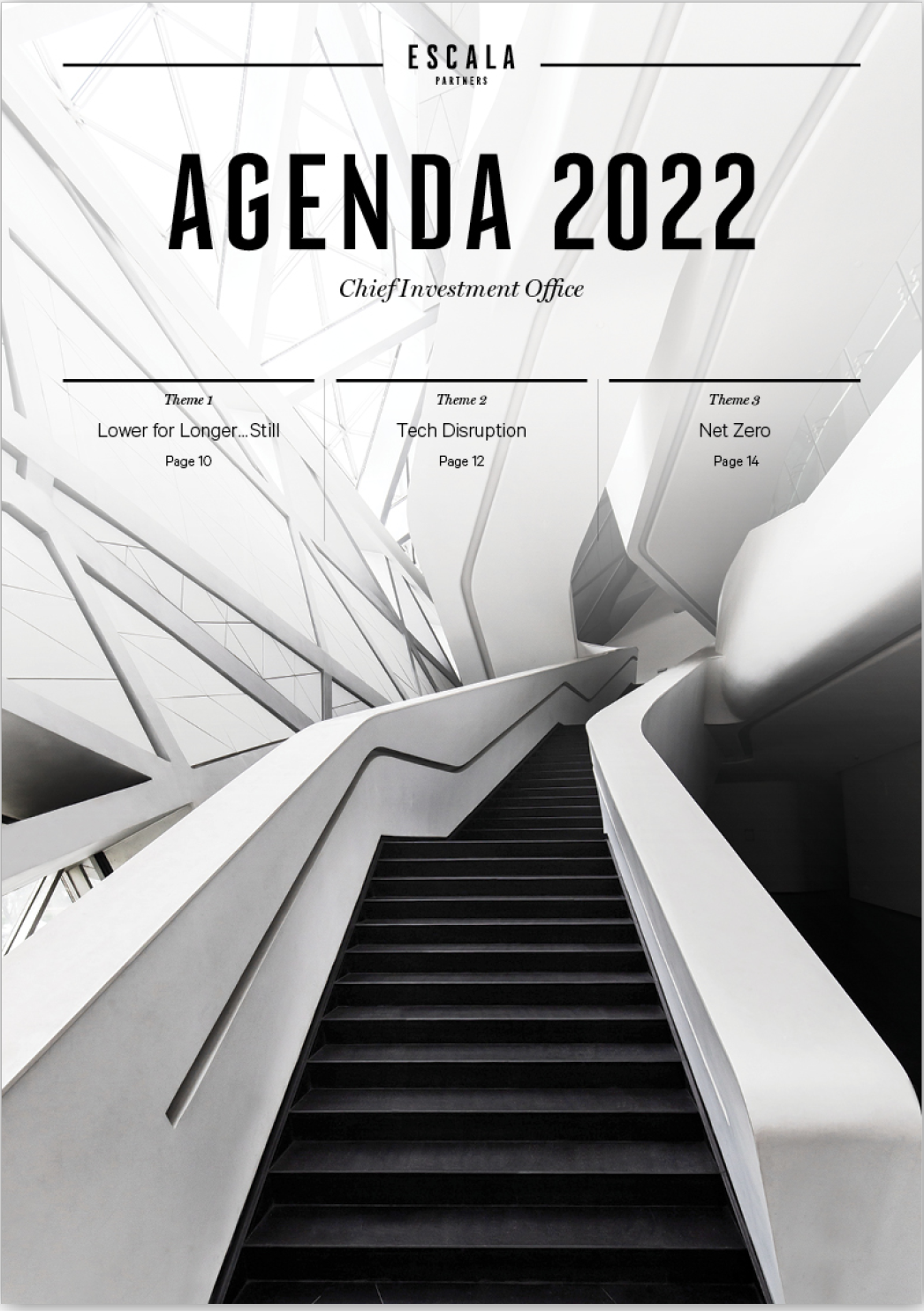-
Overview
The tide of monetary and fiscal stimulus that has been responsible for lifting all manner of things, not just the price of (micro) chips and ships, is receding. In its wake will be peak earnings, peak demand and peak prices. The question for 2022 is – how quickly will the tide recede and will there be crosscurrents?
Warren Buffet once famously said it is only when the tide runs out that you learn who has been swimming naked. We are adopting a more cautious stand. A lower tide means lower returns means higher chance of a mis-step. Taking fewer risks and being aware and comfortable with the risks we do take will be key in 2022.
US$190trn – Total market cap of all listed stock and bond markets in the world.
1. Peak earnings but still high margins
Nearly two out of three of the biggest U.S. publicly traded companies reported fatter profit margins in 2021 than they did in 2019. Nearly 100 of these companies have booked 2021 profit margins that are at least 50% above 2019 levels.
Corporate profits in the United States rose to a record high of US$2.54 trillion in the third quarter of 2021. Slower economic growth in 2022 and higher input costs mean earnings will slow but growth will remainhigh by historical standards.
S&P500 profit margin (profit as % sales)

Source: Bloomberg
2. Peak demand but strong balance sheets
One of the weird paradoxes of the pandemic is that we’re generally a lot richer than we were before it. And this is true even for the bottom 60% of households. U.S. household net worth is up by US$25 trillion. That wealth has spurred a surge in demand and will serve to cushion households in 2022.
While some parts of the economy still lag – including recreation, transportation, restaurants and hotels – three-quarters of the S&P 500 companies, as measured by market value, are in industries where output is significantly above where it would have been absent the pandemic, thanks to intense demand.
Given lockdowns, most of the demand was channeled into goods consumption. With 90% of the world’s traded goods transported by sea, it is no wonder 2021 was a year of ship shortages and port congestion.
2022 will see a more open global economy allowing more of this consumption spending to be channeled back into services, which historically has accounted for around half of household consumption.
World consumption of goods and services % GDP

Source: Bloomberg
90% – Percentage of the world’s traded goods transported by sea.
3. Peak prices but a milder rate hike cycle
Consumer price inflation will likely be lower this year due to both an easing in supply-chain blockages and an easing in demand. Inventory levels will be key in 2022. The next phase of the supply chain crisis could easily be too much of everything as manufacturers respond to the shortages by stepping up production. It is a logical reaction, and basic economics: supply falls short of what’s needed, prices rise and producers respond by boosting output, supply increases, and prices fall.
How fast the liquidity tide runs out will ultimately depend on the persistence of inflation. An easing of inflation will relieve the pressure on the US Federal Reserve to raise interest rates too aggressively. Indeed, the record high levels of debt in the system imply 2022 could be the start of the mildest tightening cycle on record.
US used car and truck price (yoy %)

Source: Bloomberg
US$25trn – The amount US household net worth has risen.
The tide is already turning on monetary policy. In 2020, 90% of all central bank decisions were to lower official interest rates. In 2021, 87% of all central bank decisions were to raise official interest rates. Never before have we seen such a quick reversal of policy settings. Admittedly, the vast majority of these rate hikes came out of emerging markets where inflation is tracking uncomfortably high. Just four developed market economies, New Zealand, Norway, South Korea and the United Kingdom have tightened monetary policy so far. Canada and the United States are the most likely candidates to join them in 2022.
Tide running out on cheap money

Source: Bloomberg
The tide is also turning for fiscal policy. In the U.S., emergency programs are ending and even though President Joe Biden’s administration is pushing a longer-term spending plan, most of the new spending will be funded over a 10-year period. Europe’s austerity debate from last decade is poised to flare up again, while the U.K.’s leaders claim a moral duty to start trimming budget deficits.
Japan’s new Prime Minister plans on more spending, but it won’t match the size of the country’s record pandemic stimulus. China has been cautious with its budget, a stance that could shift as the economy slows. In some emerging nations like Brazil, soaring inflation is driving a debate about excessive spending.
In 2022, the largest post-war government-funded spending program will make way for a shift toward austerity many times larger than what followed the 2008 global financial crisis.
The addition to growth from fiscal policy will therefore turn into a subtraction. As with monetary policy, the policy reversal will be significant in some countries.
From fiscal boost in 2020 to drag in 2022 (ppts GDP)

Source: IMF
10 times – The multiple increase in the Fed balance sheet compared to pre-GFC.









